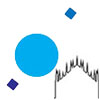MOONS is a new Multi-Object Optical and Near-infrared Spectrograph being built for the Very Large Telescope (VLT). The wealth of science that an efficient, highly-multiplexed, near-IR spectrograph can generate is undeniably vast and it has been a common aspiration for the VLT for long time. MOONS is designed to be extremely versatile and provide the ESO community with a world-leading work-horse capability able to serve a wide range of Galactic, Extragalactic and Cosmological studies.
MOONS is being built by 10 different institutions, spread across six different countries. The Principle Investigator for the project is Michele Cirasuolo who is based at ESO. The co-PI’s each representing a different contributing country are:

- Chile: L. Vanzi (AIUC)
- France: H. Flores (GEPI, Paris)
- Italy: E. Oliva (INAF)
- Portugal: J. Afonso (IA)
- Switzerland: M. Carollo (ETHZ) & S. Paltani (Université de Genève)
- UK: R. Maiolino (Cambridge) & C. Evans (UK ATC
The design consists of 1001 fibers deployable over a field of view of ~500 square arcmin, the largest patrol field offered by the Nasmyth focus at the VLT. The total wavelength coverage is 0.65μm-1.8μm and two resolution modes are foreseen: medium resolution and high resolution. In the medium resolution mode (R=4,100 in the optical range, up to R=6600 in the H band) the entire wavelength range is observed simultaneously, while the high resolution mode covers simultaneously three selected spectral regions: one around the CaII triplet (at R=9,300) to measure radial velocities, a region in the J band (R=4300) and one in the H band (R=18300), allowing detailed measurements of chemical abundances.
The grasp of the 8.2m Very Large Telescope (VLT) combined with the large multiplex and wavelength coverage of MOONS extending into the near-IR will provide the observational power necessary to study galaxy formation and evolution over the entire history of the Universe, from our Milky Way, through the redshift desert and up to the epoch of re-ionization at z~8-9. At the same time, the high spectral resolution mode will allow astronomers to study chemical abundances of stars in our Galaxy, in particular in the highly obscured regions of the Bulge, and provide the necessary follow-up of the Gaia mission. Such characteristics and versatility make MOONS the long-awaited workhorse near-IR MOS for the VLT, which will perfectly complement optical spectroscopy performed by FLAMES and VIMOS.
IASF-Milano is responsible for developing the Observation Preparation software (A. Belfiore, P. Franzetti, A. Gargiulo, coordinator: B.Garilli)
Within the scientific scientific group, we carriy out the trade-off studies for the different GTO survey strategies (A. Gargiulo) and participate to the science working groups focused on Early type galaxies, on star forming galaxies and on the high redshift Universe (A. Gargiulo and B.Garilli). We also participate to the development and testing of the redshift automatic measurement code (S. Bisogni, P. Franzetti, B. Garilli, G. Vietri) and to the definition and implementation of the GTO data Quality Control checks (S. Bisogni, G. Vietri)
For more information, consult the offical MOONS web site
